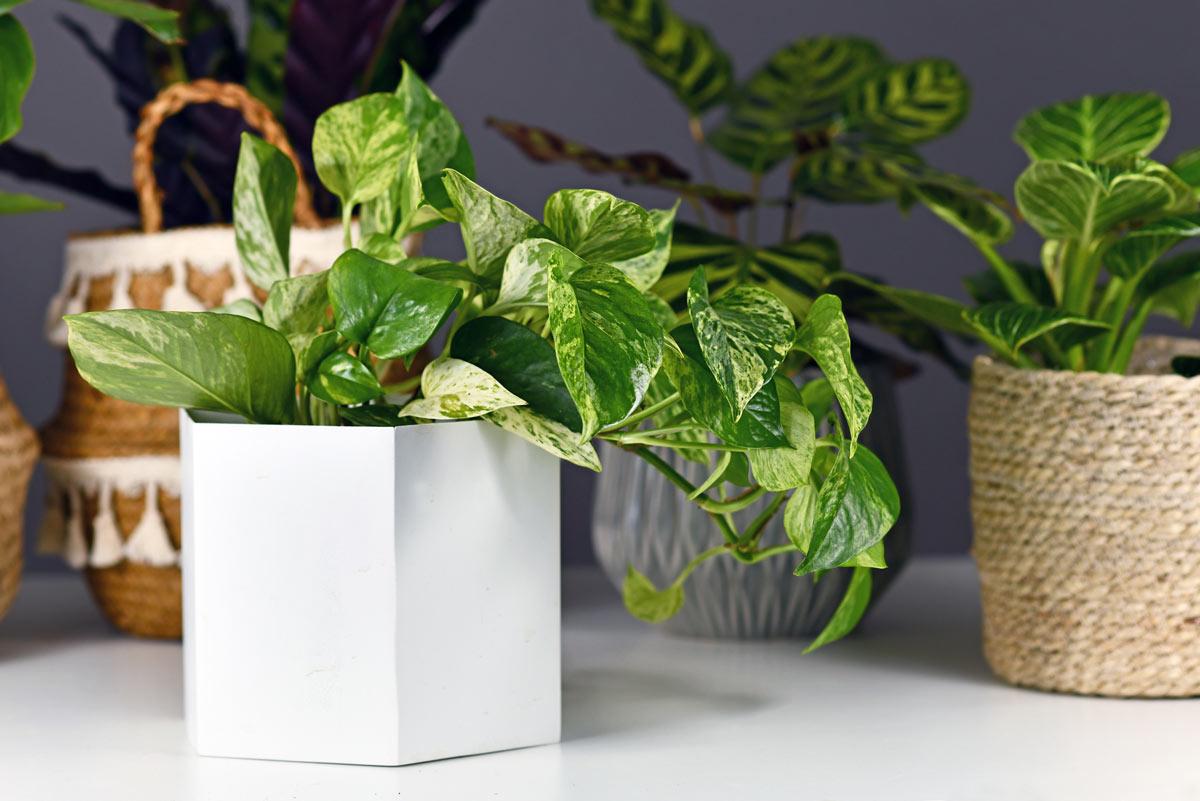Indoor gardeners often seek the best ways to nurture their plants, and one key factor is the quality of water used. Reverse Osmosis (RO) water has emerged as a popular choice thanks to its exceptional purity. It is made using an RO filtration system that contains a semipermeable that effectively filters a range of contaminants and impurities for maximum water safety and cleanliness.
However, many people have doubts whether RO water is actually beneficial for indoor plants or not. So, to give a reasonable answer, we have specially crafted this blog, read till the very end.
Is RO water good for indoor plants?
Yes, RO water is generally good for indoor plants. RO water goes through an extra filtration process that removes dangerous contaminants like chemicals, pesticides, heavy metals, and other toxins that are commonly found in tap and well water. These contaminants can be harmful to sensitive indoor plant species in the long run.
RO water also has lower mineral content which prevents mineral buildup in the soil that can inhibit plant growth over time. While RO removes some minerals, indoor plants don’t need as many minerals as outdoor plants since they aren’t producing large yields of fruits/vegetables. The pure water from RO is suitable for most houseplants to stay healthy.
How RO water is good for indoor plants
RO water is beneficial for indoor plants in multiple ways. It is purer and has fewer dissolved contaminants and minerals than tap or well water. This purer water allows for better nutrient uptake and plant growth.
Nutrient Uptake
With the lower mineral content of RO water, indoor plants aren’t battling hard water minerals that can inhibit nutrient absorption from the soil. The plant roots are able to more efficiently take in nutrients from the soil when watered with RO water. This leads to healthier, happier plants that grow and thrive well inside.
RO water won’t leave mineral deposits on leaves either, which regular tap water can sometimes do. Overall, using RO-purified water is a small change that makes a big difference in how well indoor plants can take the nutrients they need from the soil.
Photosynthesis
RO water provides a clean, pure source of hydration that allows indoor plants to efficiently carry out the process of photosynthesis. Without mineral deposits clogging plant pores or contaminants blocking biochemical reactions, indoor houseplants can easily uptake carbon dioxide from the air through their leaves.
This taken together with water and sunlight enables indoor plants filtered with RO water to produce optimum levels of carbohydrates, proteins and other organic compounds through photosynthesis. The energy captured through photosynthesis then fuels ongoing healthy growth and development of indoor plants.
Cell Structure
The minimized mineral content of RO water helps maintain optimal cell structure in indoor plants. Without a buildup of deposits inside plant cells, indoor houseplants supplied with RO water can keep their cell walls, cell membranes and organelles like chloroplasts and vacuoles in top condition. This supports cellular processes on a microscopic level.
Reverse Osmosis water also allows indoor plants to regulate water and nutrient transport throughout all roots, stems, leaves and other plant tissues effortlessly. Overall healthy cell structure then translates to visible lush growth and vigor on the whole plant level for indoor gardening.
Temperature Regulation
Using RO water helps indoor plants neatly regulate their internal temperatures. With contaminants removed, plants can circulate water throughout their systems without restriction. This efficient fluid transportation aids transpirational pulling and evaporative release of excess heat through leaf stomata.
Transpiration also assists in absorbing cooler temperatures when interior conditions become too warm. Well-hydrated houseplants tolerate a wider range of indoor environments thanks to RO water. RO assists nature’s way of maintaining a homeostatic climate at the core of stems and leaves.
Soil Health
The reduced mineral content of RO water helps maintain optimal soil health for indoor plants. When minerals aren’t constantly accumulating in the soil over time from standard tap water, potting mixes don’t become depleted or lifeless as quickly.
RO water also doesn’t deposit damaging salt residues that can build up to toxicity levels. This keeps the soil loose and fertile to support beneficial microbial activity. Indoor plants watered with RO thrive as their roots are nourished by soil teeming with microbes. Overall soil quality stays high for ongoing plant vibrancy.
Frequently Asked Questions:
Is RO water safe for all types of indoor plants?
Yes, RO water is safe for all common types of indoor plants. RO removes contaminants from tap water that could potentially harm your houseplants. Pure water allows your indoor plants to easily absorb nutrients and stay hydrated. Just be sure to occasionally fertilize as RO strips out some helpful minerals plants need in small amounts.
Does using RO water improve nutrient absorption for indoor plants?
Yes, using RO water can improve nutrient absorption for indoor plants. The RO water allows plants to readily take up nutrients from the soil without any interfering particles. With minerals removed, the plant roots don’t have to work as hard to uptake fertilizer. This efficient absorption leads to greener, healthier foliage and overall better growth for your houseplants.
How does RO water affect the photosynthesis process in indoor plants?
Using RO water has a positive effect on photosynthesis in indoor plants. With contaminants filtered out, plants can effectively take in carbon dioxide through their leaves. This helps the chemical process of photosynthesis run optimally to produce sugars and oxygen. Indoor plants thrive with pure water as it allows them to maximize energy production through photosynthesis.
Final Words:
Reverse Osmosis water provides numerous benefits for indoor plants when compared to regular tap water. RO water is purer and removes contaminants that can harm plants. It allows for optimal nutrient uptake, photosynthesis, cell structure, temperature regulation, and soil health.
The end result is houseplants that display vibrant green growth and flourish indoors when hydrated with Reverse Osmosis purified water. RO water is certainly worth considering for any serious indoor gardener looking to nurture their plant collection.
Keep an eye for more news & updates on Gossips!




